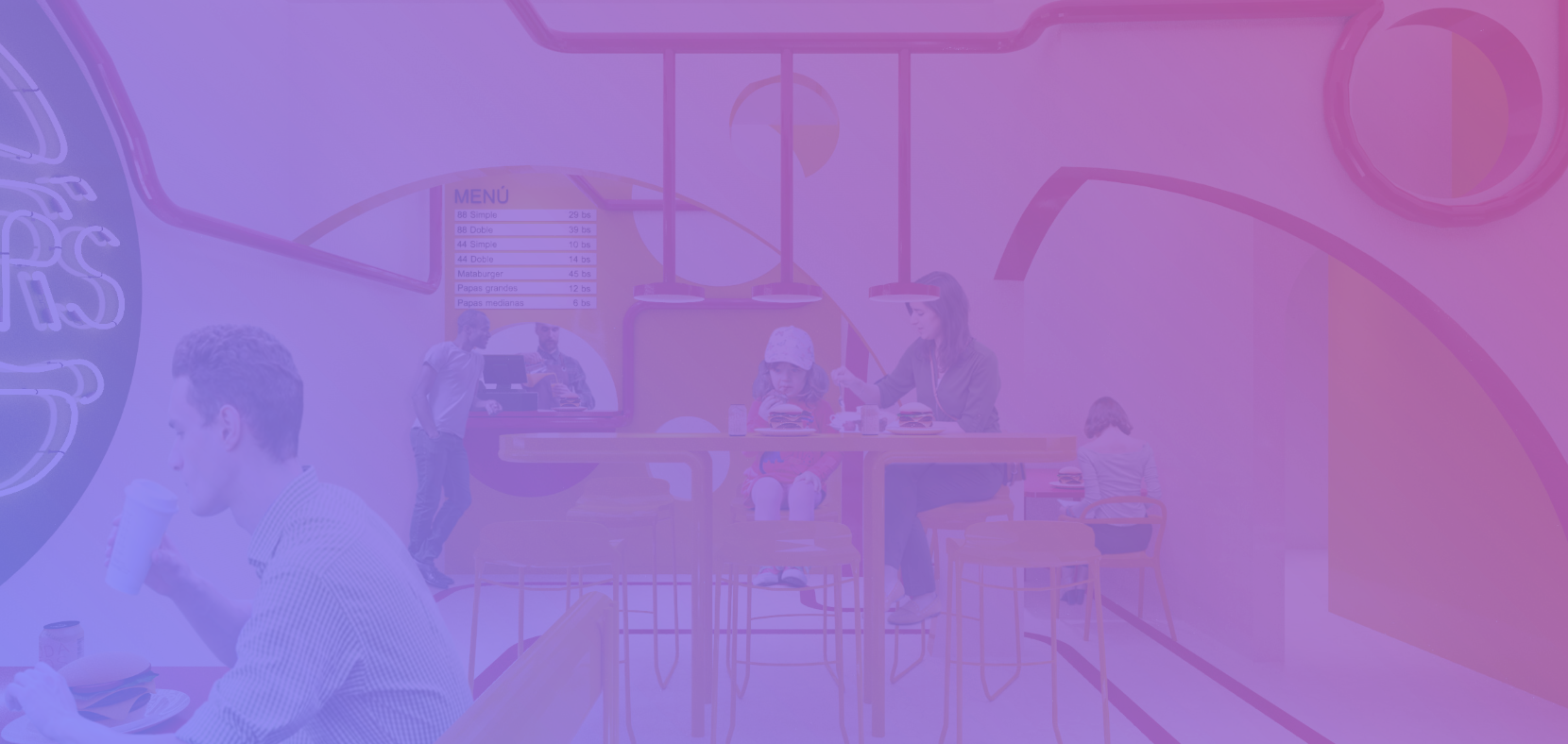

ABOUT THE AUTHOR
Ana Montes Graphic Designer. Design and Communication Leader
“Throughout my career, I’ve had the opportunity to work collaboratively with people from different backgrounds and professions. I’m interested in studying each project with its specific needs concerning design. I’ve found it increasingly evident that to impact the user, nowadays it is not enough to design visually attractive projects; it is necessary to also seek the generation of a rewarding experience, especially in a digital world in which social media is such an important part of our lives”
Introduction
One of the challenges of living in this digital age as a design or architecture expert is that society has lost the capacity for wonder and trends are hyper-fleeting. It is very difficult to make a real impact or attract and keep people’s attention. Therefore, it becomes vitally important to strengthen both the “identity” and “feeling of belonging” of users with brands and places.
To make the user identify and generate a positive relationship with a certain design, we find importance in the concept of building a “rewarding experience” for them. To achieve this from design and architecture, it is essential to understand the user, and their needs to generate divergent solutions.
What is a rewarding experience and why is it important?
Depending on the project, in general, it can be said that a rewarding experience is achieved when the solution meets the obvious and not-so-obvious needs of the user. To satisfy these, it is necessary to differentiate basic needs, lifestyle, safety and comfort requirements, as well as identify aspirational aspects. In case all these needs or at least the most relevant ones are covered throughout design and architecture, a pleasant and memorable result will be achieved. This generates a positive bond between the project, client and business.
From a business perspective: If the customer is satisfied, he or she will be a loyal customer. This means that the experience the client has with the designer begins when they first get in touch and continues with a post-sale relationship. Having a good relationship with the client will help to understand their requirements and desires, and meet their expectations. If all goes well, the client will return for future projects and for sure will recommend our design services.
From the human perspective: It is possible to empathize and generate a bond with clients, by providing them with a solution that positively impacts their lives.
Generating an experience for the user from a design and architecture perspective.
As previously mentioned, social media currently displays in front of our eyes while invading our senses an infinite amount of information in a matter of seconds, so much so that it alters the way people react to new design proposals. After all, we as humans seek to connect with others, and this is where the creative challenge of “how to transcend beyond the screen” comes in, generating experiences that have an authentic impact.
In the ideal world, graphic design and architecture work hand in hand under the same concept. By working together, the project is enriched since both perspectives seek to generate a pleasant experience from their contributions on topics such as the selection of colors, textures, patterns, surprising aspects for the user, materiality, and so on.
As a user, entering a place and discovering pleasant sensations through design, lighting, aroma and human warmth instantly generates added value and therefore a memorable experience. In the case of a restaurant or a store, it is sought that the user prefers to return each time, that’s why even the smallest detail counts. Graphic design visually complements the concept that the architectural project raises. We can say that they work together to reinforce the concept that was defined by the client from the beginning.
Once this is achieved, social media plays in favor of the project. Being part of a digitized culture, the user usually shares their experience on different platforms. According to a survey conducted by Schofields Insurance, today's consumers, especially Millennials, consider the atmosphere, design and overall appearance of the experiences when they choose to purchase. On many occasions, they look for places to take pictures or videos and upload them on “Instagram” or “TikTok”. However, it is important to consider that the main goal should not be only to achieve "likes" or online views of the business but to get users to identify with the concept, leave with a good experience and expect to return, the rest will come in addition.

Cafeína Design's example
In the case of Cafeína Design, the Architectural design proposal for 88 Burgers Restaurant is a clear example of how architecture and design create a rewarding experience. The experience of this hamburger restaurant begins from the entrance, where the user will find a car wash that would seem abandoned, acting as a hidden access to what would be "another dimension". Entering the restaurant is a reinterpretation of classic American dining rooms with touches of timeless design.
From the moment the users arrive, they will experience nostalgia in the entire space that surrounds them through 3 essential elements: curiosity, evocation and contrast.
A space full of colors and geometric patterns was designed, playing with the scales of the elements and exploring them from atypical points of view. Therefore, in addition to architecture, elements such as furniture, lighting and graphic design become an essential part to complement an experience that stands out from typical hamburger restaurants.
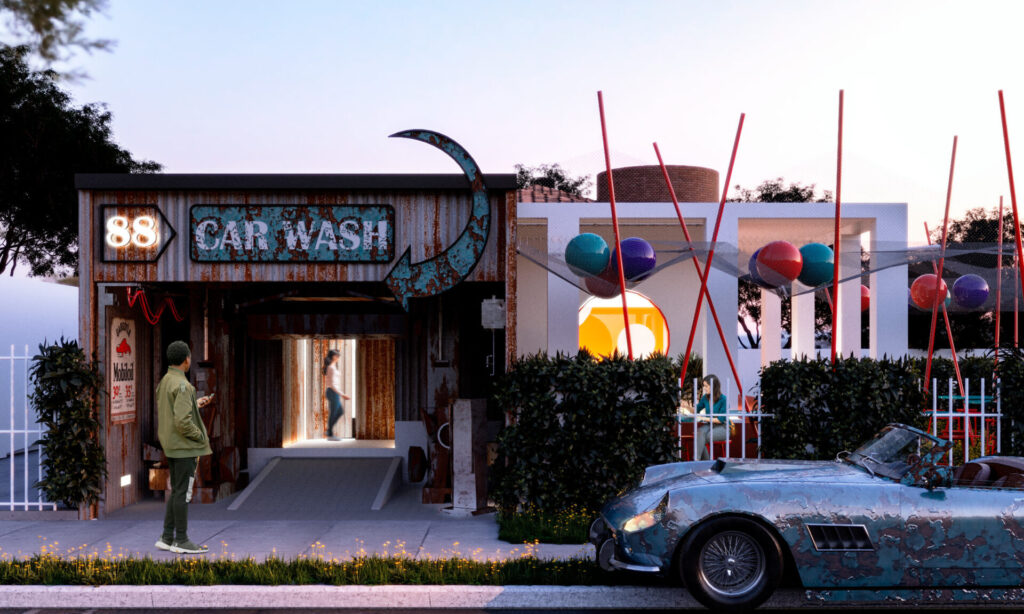

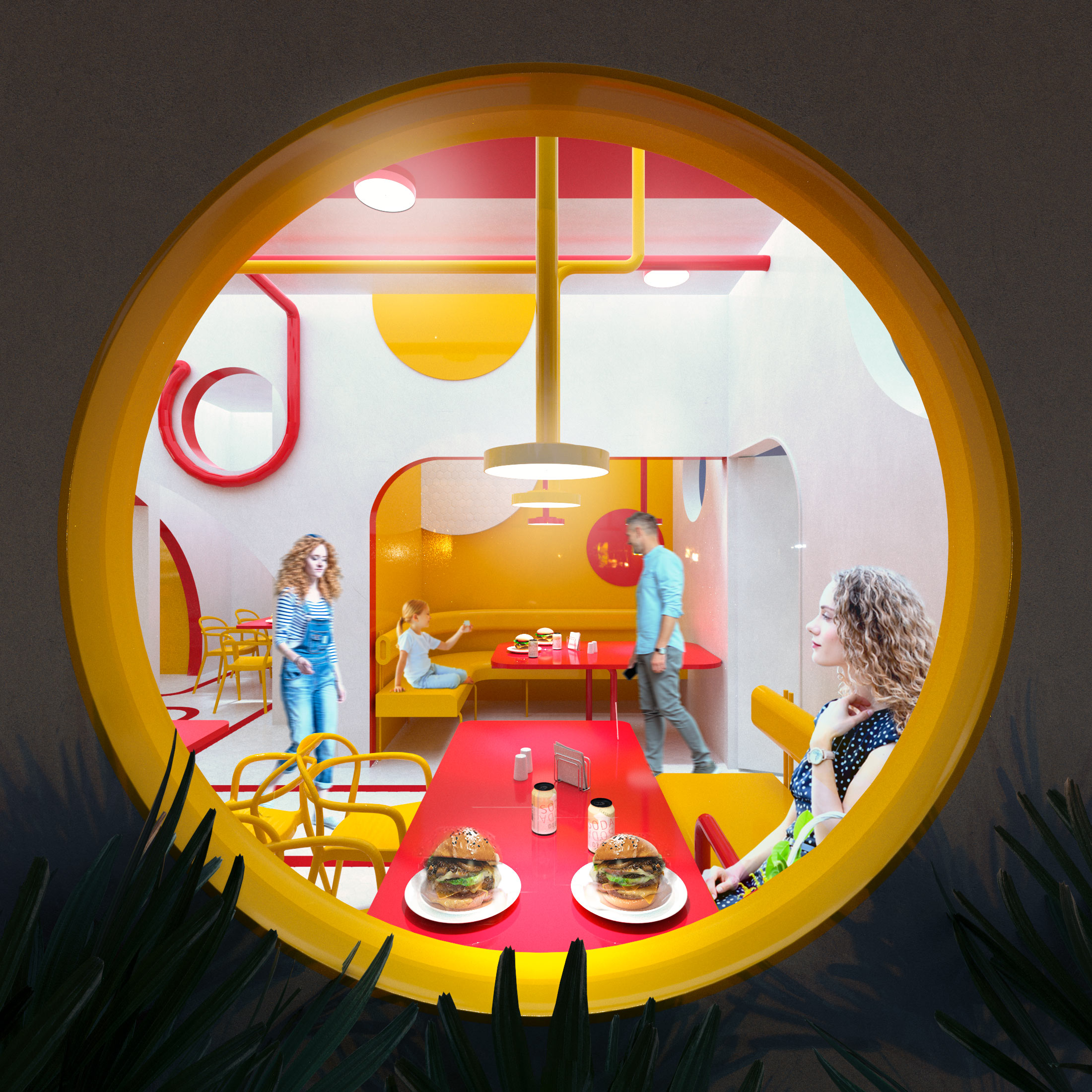
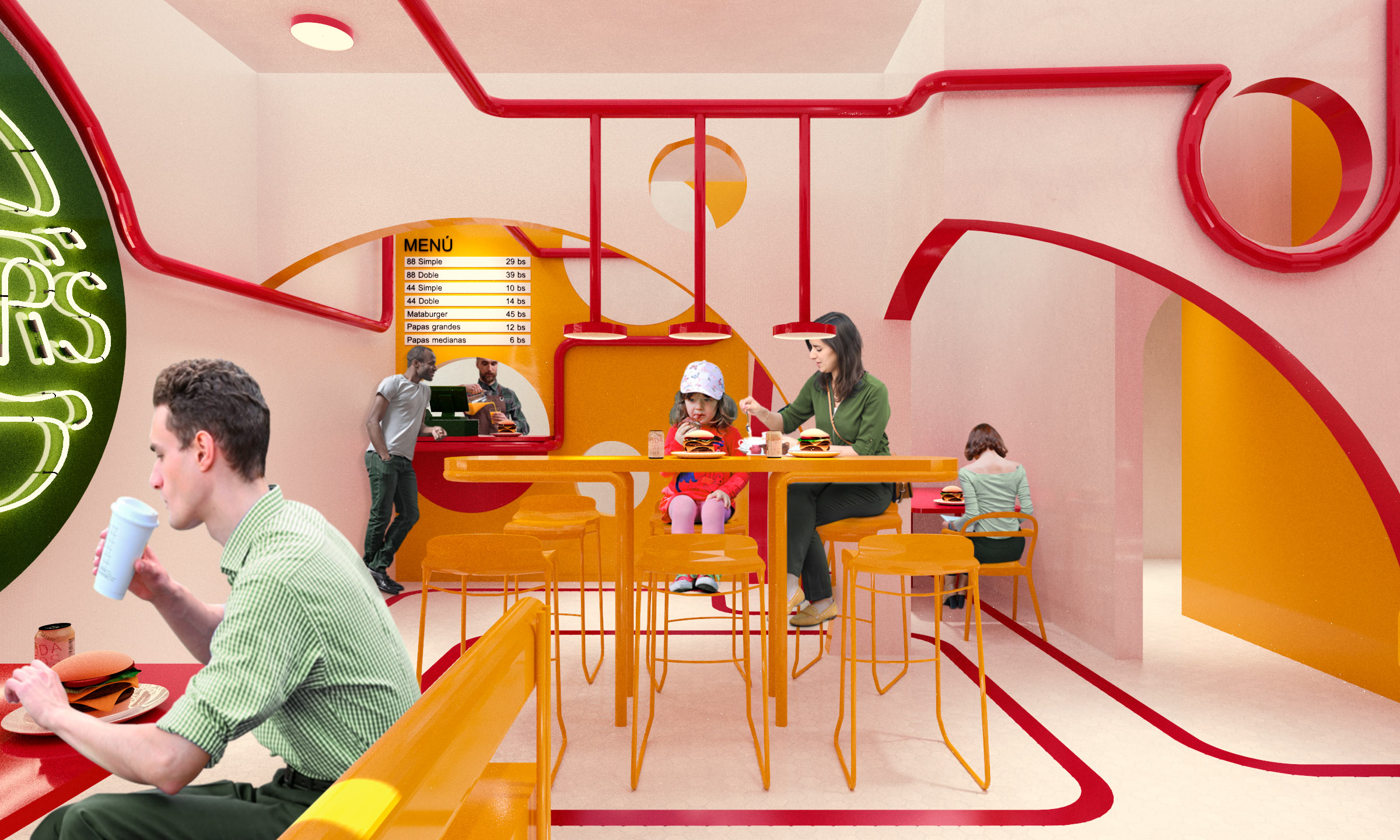
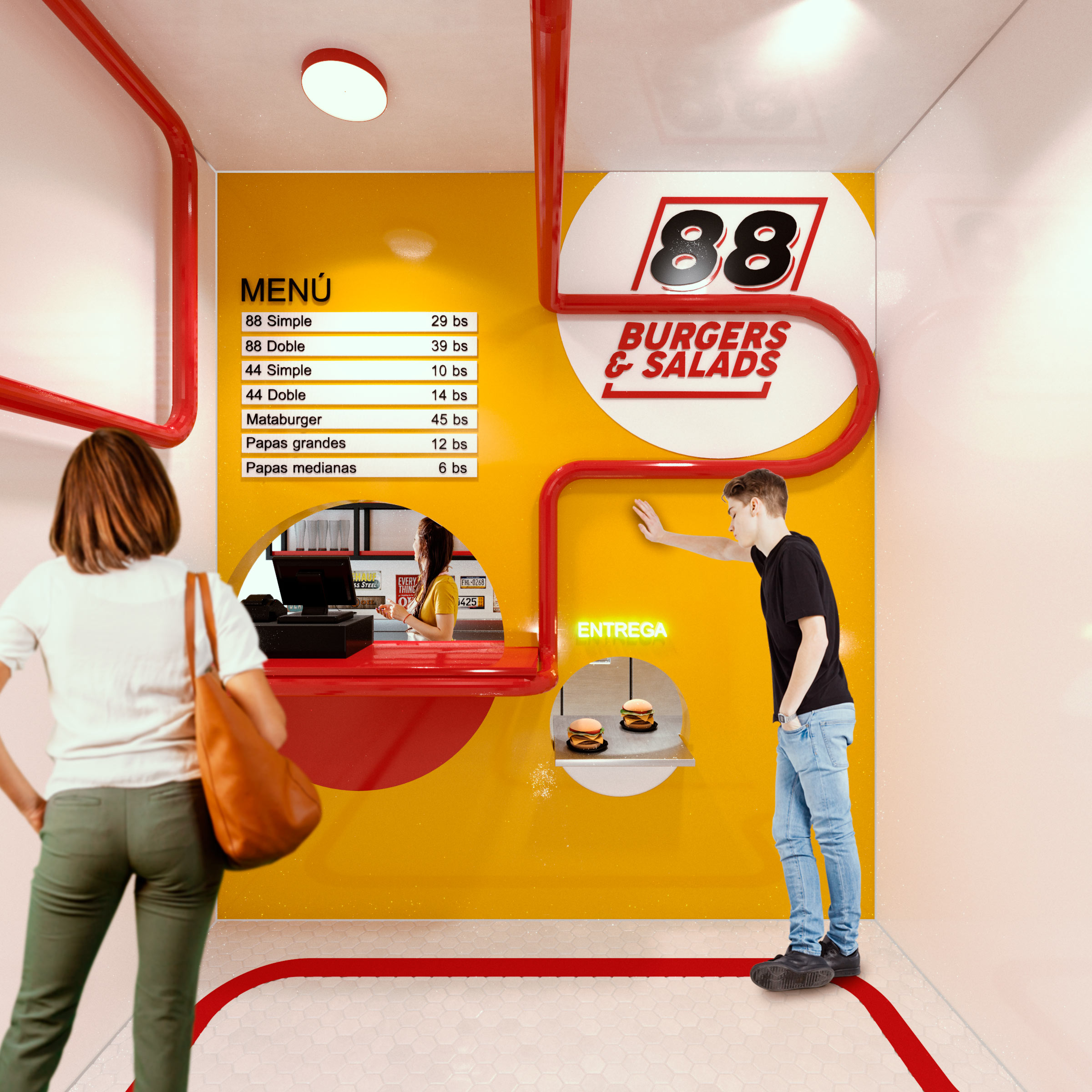
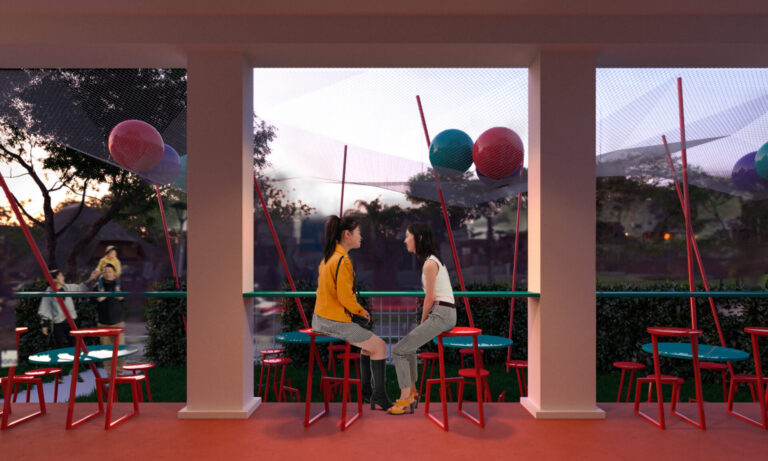
Conclusion
To achieve an original design which results in a rewarding experience, the intention must be to design enhancing all kinds of user experiences within the space. To think about how to solve their needs and seek to generate physical and digital interaction. This is coupled with a clearly defined concept both in design and architecture.
Want to know more about this topic?
Contact us
